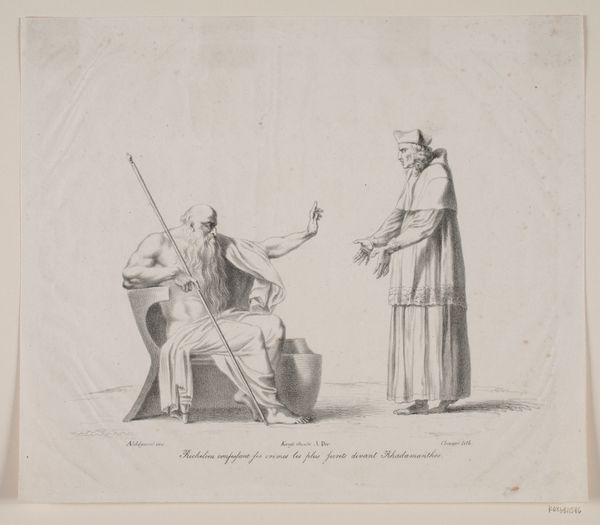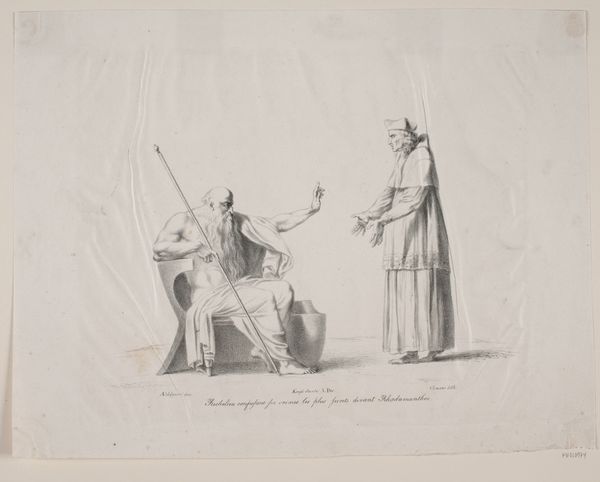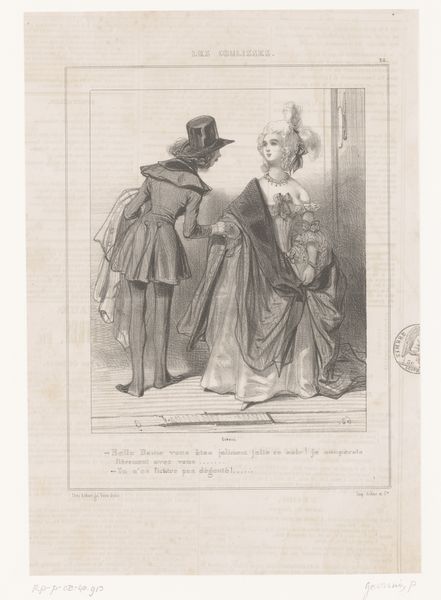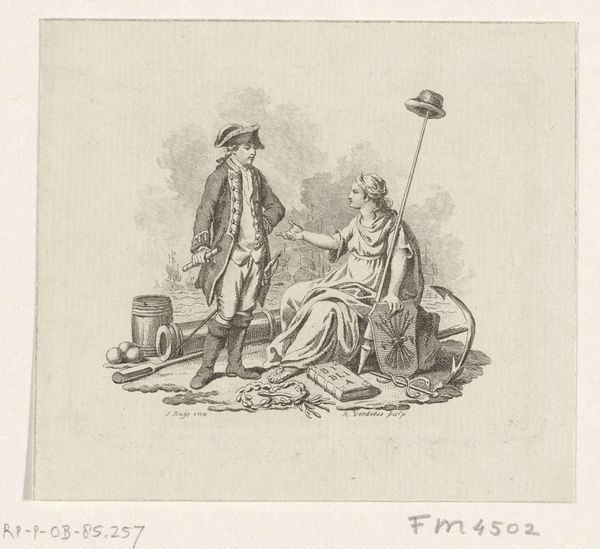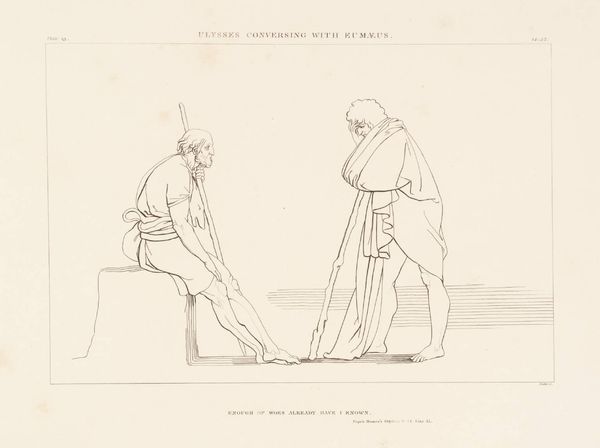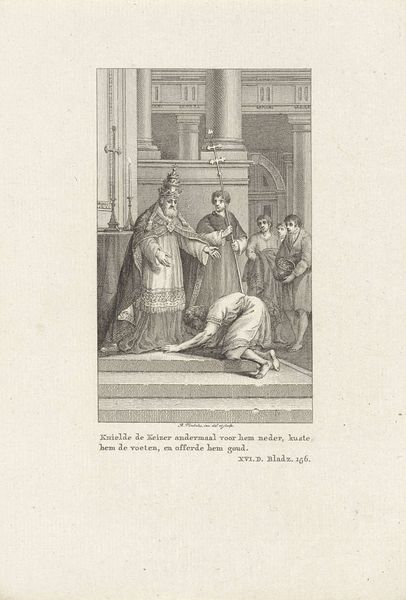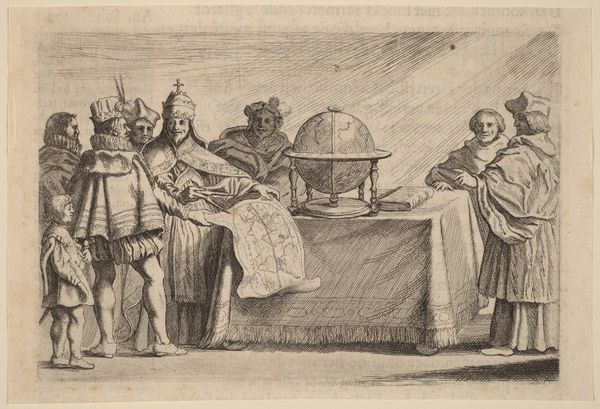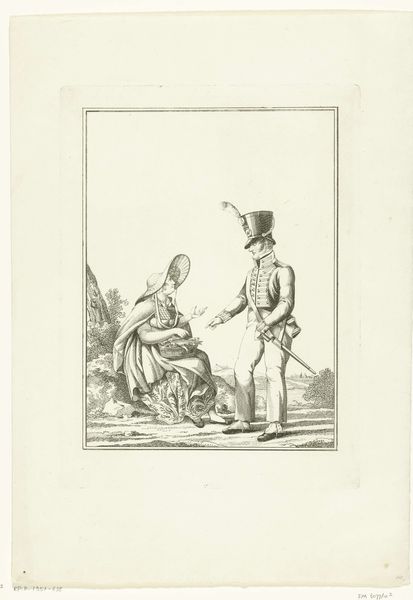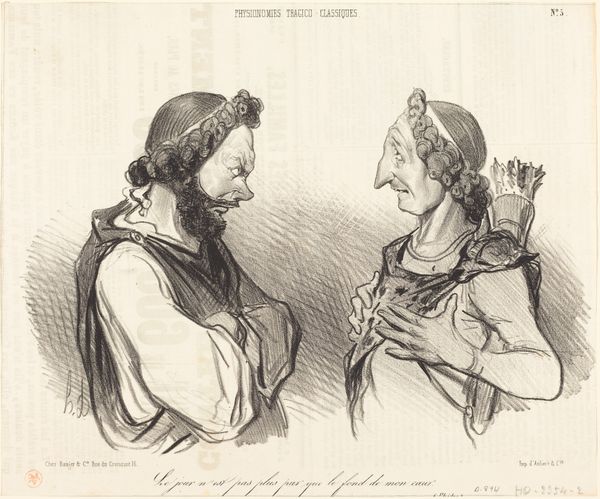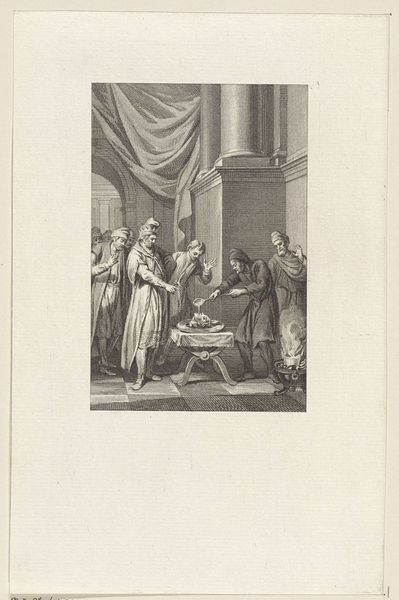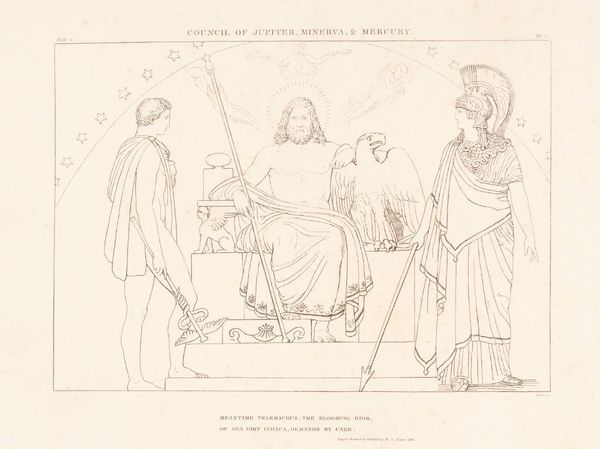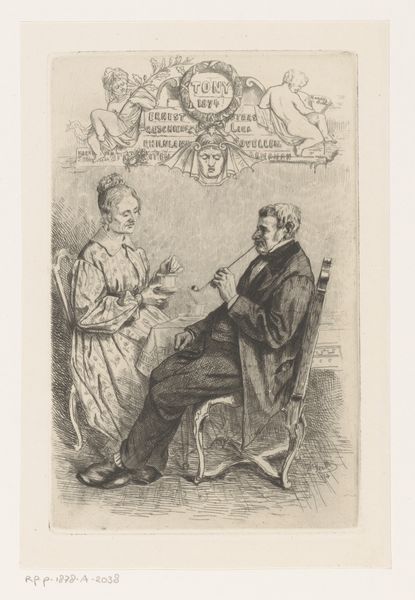
drawing, lithograph, print, engraving
#
drawing
#
lithograph
# print
#
figuration
#
line
#
history-painting
#
engraving
Dimensions: 252 mm (height) x 330 mm (width) (bladmaal)
Curator: What a stark and strangely serene image. I find this lithograph by J.F. Clemens, titled "Richelieu for Rhadamanthos," and made between 1748 and 1831, captivating in its simplicity. The stark lines give it almost an ethereal quality. Editor: You know, looking at this, the first thing that strikes me is how nakedly exposed the Cardinal looks! He's used to power, and here, presented before divine justice, his fancy robes seem almost pathetic, or… too thin. Curator: Exactly! Clemens cleverly uses line and the starkness of the print medium to expose the vulnerabilities inherent in power, even divine power. Consider the material realities here: lithography, which democratized image production in a way that suited Clemens' political critiques, as print became readily available for widespread distribution. Editor: Yes, he seems stripped down to his essence. Even the crosshatching gives his garments this transparency and fragility, as if his deeds are almost…visible through them. And Rhadamanthos, the judge of souls, doesn’t seem particularly impressed! That simple line and stern figure contrasted with Richelieu…it creates such a narrative! Curator: And that narrative speaks to a changing social landscape where historical figures were being reconsidered through a critical lens. The very act of memorializing a controversial figure like Richelieu through mass production implicitly opens him up to scrutiny. We have power and representation right there. Editor: It’s true, there is that critical edge, but also maybe some kind of weird sympathy. Look at Richelieu’s pleading posture… It's so delicately rendered, there is some implied tension with that historical portrayal. Maybe Clemens is poking at how complicated it is to judge any man, even one in history's spotlight? Curator: Maybe…or it's a keen understanding of how propaganda works. By presenting a somewhat sympathetic Richelieu, it challenges the viewer to more actively engage with their judgment of his life and actions. Editor: Well, regardless of his intentions, the artist made us work to consider our place in viewing of the world and those people, past or present. It definitely has resonance. Curator: Indeed. Thinking about it materially and socially offers some solid entry points. I find it especially valuable in considering our understanding of power structures even today.
Comments
No comments
Be the first to comment and join the conversation on the ultimate creative platform.
